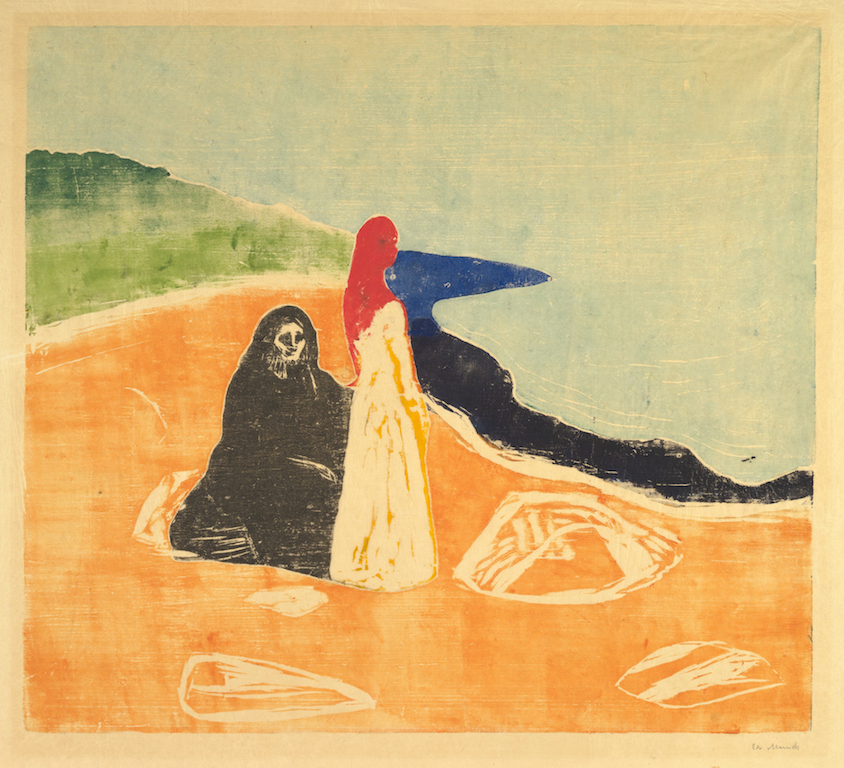A birthday feast of Edvard Munch prints

Moonlight, or A Night in St. Cloud of 1895, captures mood, shade and even color in its tonal varieties.
A birthday is a good time for reflection. As well as to see an exhibition dedicated to Edvard Munch’s inventive, angst-laden prints – drypoint, etched, lithographs.
I was particularly taken by ‘Moonlight’, or ‘A Night in St. Cloud’. The figure at the window is Emanuel Goldstein, a Danish poet and housemate of Munch’s in Paris. The print relates to Munch’s painting ‘Night in Saint Cloud’. But its genius has to be the way it shows colour without having any.e seemed to grasp the medium immediately, with a delicacy that his patron Julius Meier-Graefe, the most famous German art-historian of the day and the first to encourage Munch to try his hand at printmaking, described the drypoint version of Night in St. Cloud, wrote: “Like all decent engravings,” (in this case drypoints/etchings) “these prints appear colorful, without any color. One must be blind – or highly cultured – if one cannot recognize this effect… all of them with the same subject as exceptionally good paintings, which one does not miss here.”

Two Women on the Shore, 1898
As for ‘Two Women on the Shore’ it spoke to my two selves – younger and older. That’s what Munch has represented, albeit in a heightened register – intensely hopeful youth and despairing old age, set against the shoreline of Asgardstrand, which is familiar from his work.

